Boasting pristine beauty, Ha Giang has long attracted travel enthusiasts who love to explore the majestic nature. Not only known as the frontier land of the country, Ha Giang is also famous for its concentration of historical landmarks and cultural streets of the ethnic communities. In this article, Vietnampeace.com will take you to discover 15 Ha Giang tourist destinations you shouldn’t miss!
1. Lung Cu Flagpole
Lung Cu Flagpole is located on the peak of Dragon Mountain at an altitude of 1,470 meters above sea level. As one of the four extremes of the country, Lung Cu Flagpole in Ha Giang marks the country’s northernmost point.
The flagpole was renovated in 2010, carrying the red flag with a yellow star, symbolizing the 54 brotherly ethnic groups fluttering over 33 meters high. Lung Cu Flagpole has a hexagonal design with eight bas-reliefs made of blue stone at the base, depicting Dong Son Bronze Drum motifs and the nation’s glorious history.
Visitors will climb 839 steps to reach the flagpole and admire the charming landscapes gradually appearing. Standing on the mountain top and looking into the distance, you’ll feel the cool mountain air of Northeast Vietnam and the proud, solemn atmosphere here. Additionally, when visiting, you can also stroll through the Lo Lo and Mong ethnic villages and the crystal-clear Dragon Eye Lake lying at the foot of the mountain.
Address: Long Son Mountain Peak, Lung Cu, Dong Van, Ha Giang
2. Ma Pi Leng Pass
Ma Pi Leng Pass is located on Highway 4C in the territory of Pai Vi and Pai Lung communes, connecting the city of Ha Giang with the towns of Meo Vac and Dong Van. Dubbed as one of the “four great passes” of Vietnam, this pass is the most famous tourist destination in Ha Giang.
Ma Pi Leng Pass is a 20 km long winding and dangerous pass over 1,200 meters above sea level. Visitors can embark on an adventurous journey through winding curves amidst towering cliffs and deep abysses. Along the way, don’t forget to stop at the “death cliff” to capture beautiful “Instagram-worthy” photos.
Upon reaching the pass summit, you’ll have a panoramic view of the vast Dong Van Karst Plateau, majestic, and the tranquil flow of the Nho Que River at the foot of the mountain. Here, you can participate in camping overnight. Moreover, if you visit during the ripe rice or buckwheat flower season, you’ll have the opportunity to admire the stunning terraced fields and beautiful flower valleys.
Address: On Highway 4C through Pai Vi and Pai Lung communes, Meo Vac, Ha Giang
3. Dong Van Old Quarter
Dong Van Old Quarter is a neighborhood built in the 20th century in Dong Van town, Ha Giang province. This is not only the home to many ethnic communities but also one of the cultural and architectural features that need to be preserved in Ha Giang province.
Only about 40 houses over 100 years old are nestled closely together in the old quarter, surrounded by rocky mountains. Here, visitors can admire the peaceful and ancient beauty of the gray walls tinted in the morning sunlight. At night, it turns into a bustling scene with the sounds of lip trumpets and the graceful dances of men and women in the village.
The Dong Van Old Quarter will be filled with red lanterns on the 14th to 16th lunar day of March and will organize night festivals with many unique activities. Explore the Dong Van market in the center of the Old Quarter to experience the diverse culture of the local people here.
Address: Dong Van Town, Ha Giang
4. Pho Bang Town
Pho Bang Town, also known as Pho Bang, is located west of Dong Van district. Unlike the bustling Dong Van or Meo Vac, Pho Bang is a small, peaceful town hidden amidst the mountains of Ha Giang.
Pho Bang Town has only about 3,000 people, mostly Hmong and Han Chinese. The houses here are made of simple clay, with yin and yang tile roofs and old wooden doors. Walking through the town, visitors can enjoy the simple lifestyle of the people here. If you visit Pho Bang on rainy days, you’ll feel a unique sadness and tranquility. Nearby, you can also admire the rose valley and blooming buckwheat flowers along the road.
The town is not difficult to find, but you should note that the road can be pretty challenging on rainy days. On Highway 4C from Ha Giang City to Dong Van Karst Plateau, turn left at Lung Cu junction and go about 4 km further to find the peaceful Pho Bang.
Address: Pho Bang, Dong Van, Ha Giang
5. Hoang Su Phi Terraced Fields
Regarding tourist destinations in Ha Giang, we can’t forget to mention the national-level scenic spot – the terraced fields in Hoang Su Phi district. The unique way of cultivating rice on these terraced fields has made this place an attractive landscape that draws hundreds of thousands of tourists annually.
Hoang Su Phi terraced fields cover 3,700 hectares and are spread across 24 communes and towns in Ha Giang province. The poetic beauty of thousands of terraced fields stretching evenly, winding naturally around the mountain slopes, will captivate you. Amidst the terraced fields are small meandering streams, ancient forests, and tea plantations.
Moreover, you can spend a few days experiencing the beauty and unique culture of the Northern Vietnam countryside.
Address: Hoang Su Phi, Ha Giang
6. Sung La Valley
Amidst the majestic Dong Van Karst Plateau, you will find the most beautiful “paradise” in Ha Giang, Sung La Valley. The most adventurous souls must come here to feel the rustic, peaceful beauty of the mountains and forests.
Sung La is a peaceful village nestled amidst rugged rocky mountains. It is famous for its simple roofed houses and stone fences stained with the colors of time. Visitors will feel like entering a fairyland at the end of the year with valleys full of white plum blossoms, pear blossoms, mustard flowers, or the pinkish-purple hues of wild peach blossoms and buckwheat flowers. Two places you must visit when coming to Sung La Valley are the Lung Cam cultural village and the house of Pao from the famous movie. Here, you will experience the highland identity through rustic meals, folk games, and the melodic singing of the H’Mong people.
The valley is on Highway 4C, about 20 km from Dong Van district. Along the pass road to the Pho Bang intersection is the best spot to admire the entire Sung La Valley from above.
Address: Sung La, Dong Van, Ha Giang
7. Yen Minh Pine Forest
Yen Minh Pine Forest is about 10 km from Yen Minh town. Known as a miniature version of Dalat, Yen Minh Pine Forest is a destination that attracts young people to the Northern mountainous region.
Visitors here are overwhelmed by the sight of tall, straight pine trees and vast green meadows. This will be an ideal place to temporarily escape the hustle and bustle of the city and enjoy the cool, refreshing mountain air. Moreover, you can also experience camping activities in the forest area and admire the early morning mist from above.
Yen Minh Pine Hill stretches along Highway 4C, extending over 50 km through three communes: Na Khe, Lao Va Chai, and Bach Dich. Along the road, you can conveniently explore some other famous tourist spots in Ha Giang nearby, such as Quan Ba Twin Mountains, Du Gia Village, and Can Ty Ancient Citadel.
Address: Yen Minh, Ha Giang
8. Quan Ba Twin Mountains and Heaven’s Gate
Quan Ba District is the first gateway to the Dong Van Karst Plateau. Here, there are two fascinating tourist spots in Ha Giang that you shouldn’t miss: Quan Ba Twin Mountains and Heaven’s Gate.
Quan Ba Twin Mountains, also known as Co Tien Twin Mountains, have a peculiar shape with two parallel peaks rising. Associated with the legend of the miraculous fairy milk stream, the surrounding area also has a very cool climate with the Mien River flowing through, nurturing lush fields.
Heaven’s Gate is at an altitude of 1,500 meters above sea level. With its strategic position between two mountain peaks and close to the horizon, visitors can fully capture the beauty of the land and sky blending right before their eyes. This is also a beautiful spot for cloud hunting, with gentle mist surrounding the mountain slopes.
The best way to get to the Heaven’s Gate and Quan Ba Twin Mountains area is by motorbike. Ride along the Bac Sum Pass for about 46 km from the center of Ha Giang City to Tam Son town. Enjoy the exciting journey of exploring this fascinating Ha Giang tourist destination!
Address: Tam Son, Quan Ba, Ha Giang
9. Vuong Family Mansion
The Vuong Family Mansion, or Vuong King’s Mansion, is located in Sa Phin Valley, about 1 km from the Dong Van Karst Plateau. This famous tourist spot in Ha Giang contains interesting historical traces and stories.
According to historical records, King Vuong Chinh Duc chose this land to build the mansion because of its “divine geography and excellent human conditions.” The mansion covers an area of over 3,000 square meters and took nine years to complete. The architectural design of the mansion is influenced by Chinese culture, with valuable wooden columns and intricate stone carvings. The villa consists of 4 horizontal houses and six vertical houses and is divided into three areas: forecourt, central courtyard, and rear courtyard.
The Vuong Family Mansion was recognized as a national relic in 1993. Nowadays, visitors can visit and purchase souvenirs here with an entrance fee of about 25,000 VND per person.
Address: Sa Phin, Dong Van, Ha Giang
10. Lung Khuy Cave
Lung Khuy Cave is nestled amidst the mountainous terrain in Lung Khuy village, about 10 km from the center of Quan Ba district. Discovered in 2015, Lung Khuy Cave quickly became a prideful tourist destination in Ha Giang.
The cave stretches over 1,000 meters, with numerous stone arches reaching 200 meters in height. Venturing deep inside, visitors will witness firsthand the sparkling limestone stalactites in various shapes and formations. Additionally, the cave houses a fascinating stone forest of bonsai trees and stone walls that produce musical sounds when tapped, providing an engaging experience for tourists.
While exploring Lung Khuy Cave, you’ll also hear stories of the spiritual legends associated with the cave by the local Hmong ethnic group residing at the foothills. Furthermore, if you’re trekking or motorbiking, follow directions carefully, as the cave entrance is relatively concealed along the mountain road.
Address: Lung Khuy Village, Quan Ba, Ha Giang
11. Noong Lake
Noong Lake is a natural freshwater lake located in the majestic Tay Con Linh mountain range, about 35 km from the center of Ha Giang City. This place is likened to a “paradise on earth” in the Northeast mountainous region with its clear water and delicate mist covering.
Noong Lake spans two areas, Noong I, and Noong II, with an area of 20 hectares in the dry season, expanding to 80 hectares in the rainy season. The unique feature is that the water here never dries up as it is fed by underground water sources connected to the Lo River. With its position amidst the essence of nature, the lake is home to many unique fish species, such as smooth-skinned fish, carp, catfish, mullet, and bitter fish.
Surrounded by lush primary forests and majestic rock mountains, Noong Lake offers visitors an indescribable sense of peace and tranquility. It’s perfect for fishing or leisurely boating to admire the sparkling sunset on the water’s surface.
Address: Phu Linh, Vi Xuyen, Ha Giang
12. Bac Me Trench Historical Site
The Bac Me Trench historical site bears witness to the Vietnamese military’s and people’s courage during the resistance against the French. With its significant historical importance, this landmark is one of the fascinating tourist destinations in Ha Giang.
Initially constructed by the French in 1938, the trench served as a military base and prison camp for political prisoners during the French occupation of Ha Giang. The trench covers an area of about 2,500 square meters with three main zones: the central area, the barracks area, and the warehouse area. Visitors can explore the ancient walls and remnants of the prison system, guard towers, and information houses from that era.
Moreover, Bac Me Trench is located on the treacherous slopes of the Rong Mountain, overlooking the poetic Gam River. Here, you can enjoy the pristine natural surroundings of the Northeast while learning more about Vietnam’s revolutionary history.
Address: Yen Cuong, Bac Me, Ha Giang
13. Ha Giang Highland Markets
One of the unmistakable characteristics of Ha Giang tourism is visiting the highland markets. These markets are not just places for trading but also where you can experience the unique customs and traditions of the ethnic people.
Some famous market locations include Khau Vai Love Market in Meo Vac district, Du Gia Market in Yen Minh district, Pho Cao Market, and Lung Phin Market in Dong Van district. Markets usually gather on weekend mornings or every five days. Here, you can comfortably shop for souvenirs, enjoy local specialties, admire the colorful costumes of various ethnic groups, and even participate in fun activities and cultural performances.
14. Sung Khanh Pagoda
Sung Khanh Pagoda is located in a Nung village on the banks of the Lo River, about 9 km southwest of Ha Giang City. The pagoda is where tourists can explore the Buddhist culture and local beliefs.
Sung Khanh Pagoda was built during the Tran dynasty in 1356 and has undergone several renovations until today. The pagoda occupies an area of about 26 square meters and has a relatively simple architectural style. Inside the pagoda are national treasures such as two intricately carved stone steles and a nearly one-meter-high bronze bell. If you visit Sung Khanh Pagoda at the beginning of the new year, you can also participate in the lively Lantern Festival – a spring festival of the Tay ethnic group.
Address: Nung Village, Dao Duc, Vi Xuyen, Ha Giang
15. Tien Waterfall – Windy Pass Tourism Area
Tien Waterfall – Windy Pass Tourism Area is the most famous tourist destination in Xin Man district, Ha Giang, about 17 km from Coc Pai town. With its pristine natural landscape, this tourist area promises to provide visitors with exciting experiences.
Visitors will be amazed by the twin waterfalls cascading from over 70 meters, gently flowing through the treacherous Windy Pass mountain cliffs. Because of the gentle, peaceful water resembling a maiden’s hair, this place is also called Tang Tinh Waterfall (Wind Waterfall).
In addition to strolling and enjoying the pure nature amidst the ancient forest, you can also wade in the calm stream at the foot of the waterfall. If you have more time, you can also visit the ancient rock field of Nam Dan, about 6 km away, and explore the simple life of the Nung ethnic community around.
Address: Windy Pass, Xin Man, Ha Giang
Above are some famous tourist destinations in Ha Giang that represent the poetic beauty of the Vietnamese highlands. Ha Giang is considered a must-visit destination in Vietnam.
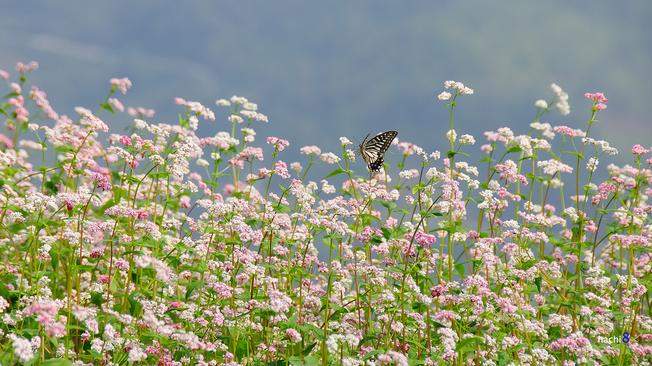
Ha Giang flower season (Photo collection)
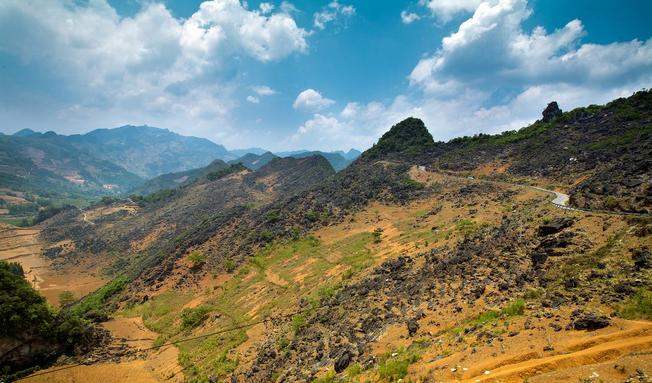
Stone Plateau (Photo collection)
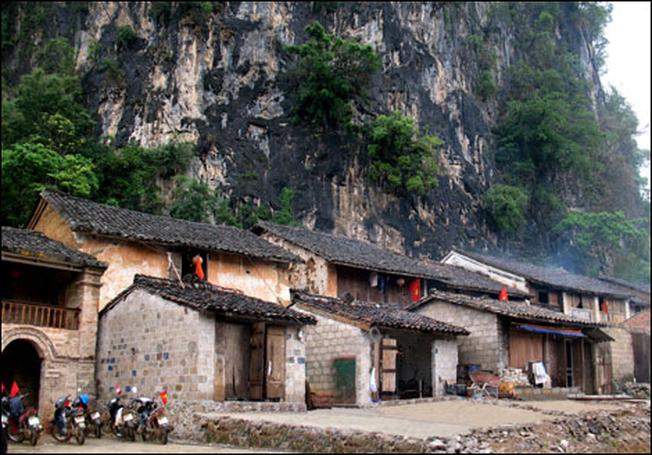
Dong Van Old Quarter (Photo collection)
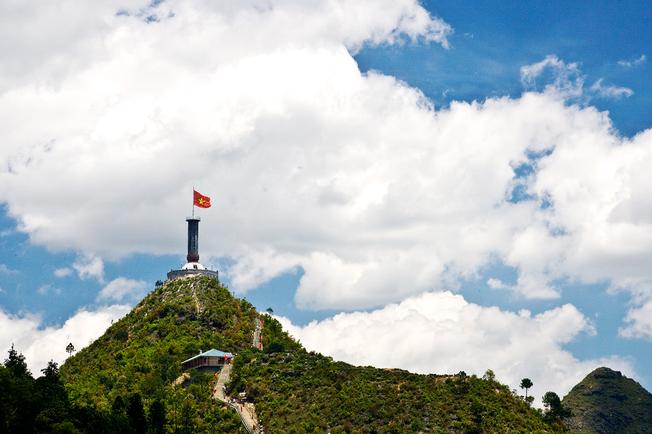
Lung Cu flagpole (Photo collection)
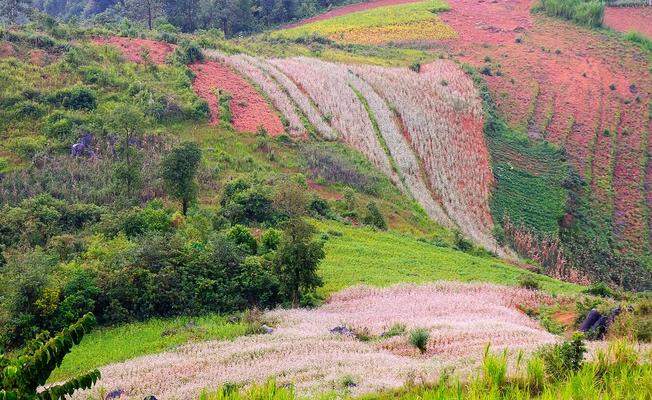
Triangular Flower Valley (Photo collection)
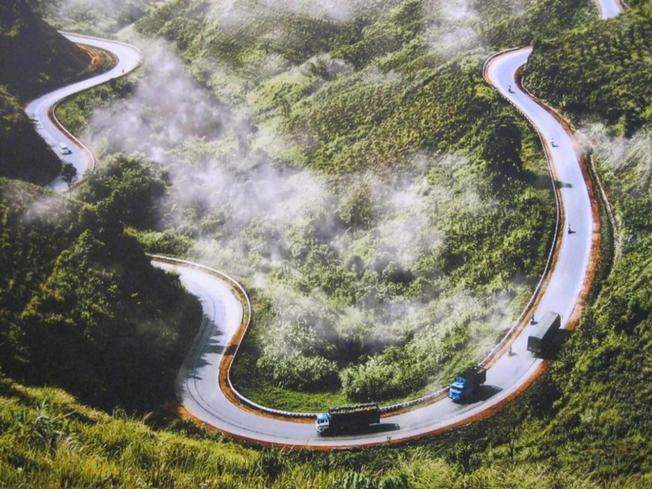
Ma Pi Leng Pass (Photo collection) |
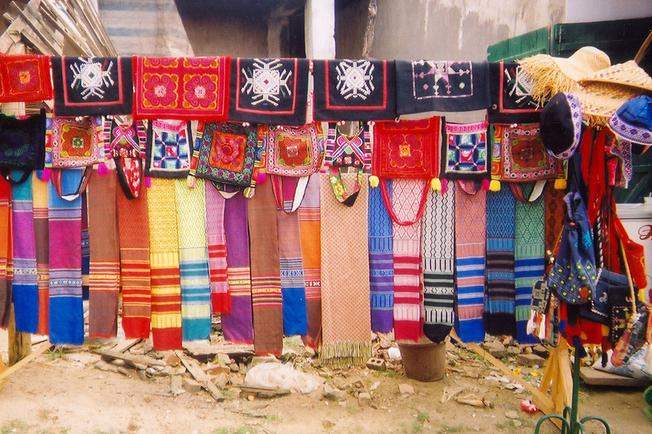
Brocade products of Lung Tam village attract many tourists (Photo collection)
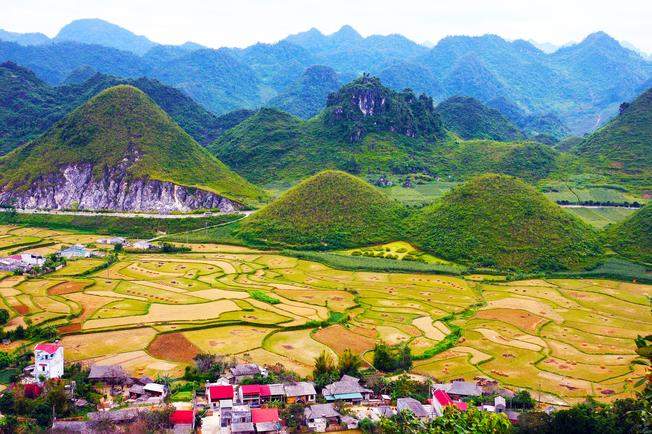
Quan Ba Double Mountain (Photo collection)
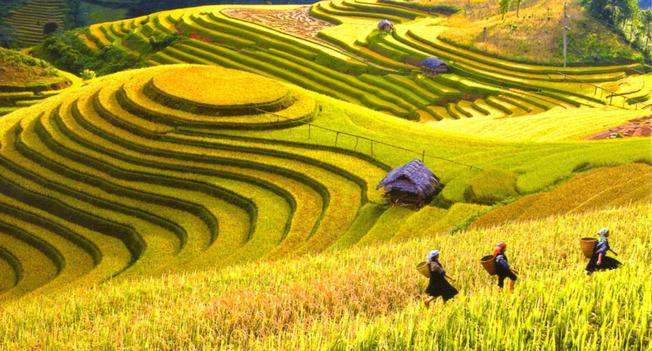
Hoang Su Phi (Collected photo)
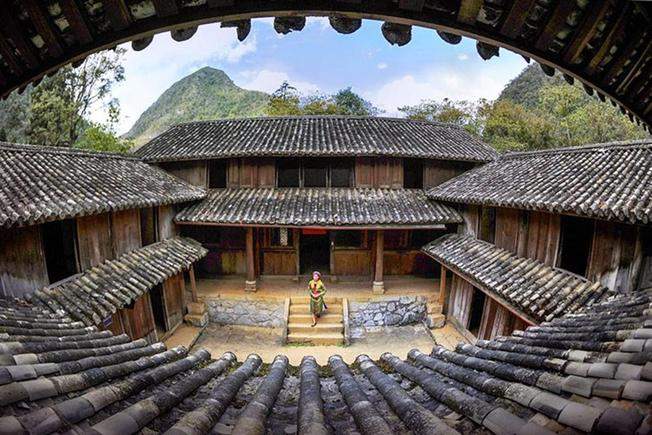
Cat King Palace (Collected photos)
